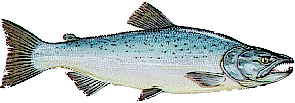 The excerpt to the right is a journal entry of Captain James Cook F.R.S. dated Sunday, March 29th, 1778.
The excerpt to the right is a journal entry of Captain James Cook F.R.S. dated Sunday, March 29th, 1778.
Cook's account of first contact in this area makes for an interesting contrast. Notice that the english language of 1778 is different from modern english (shewed is used instead of showed).
|
We no sooner drew near the inlet than we found the coast to be inhabited; and at the place where we were first becalmed, three canoes came off to the ship. In one of these, were two men, in another six, and in the third ten. Having come pretty near us, a
person in one of the two last stood up, and made a long harangue, inviting us to land, as we guessed, by his gestures. At the same time he kept strewing handfuls of feathers towards us; and some of his companions threw handfuls of a red dust or powder i
n the same manner. The person who played the orator, wore the skin of some animal, and held, in each hand, something which rattled as he kept shaking it... . One canoe was remarkable for a singular head, which had a bird's eye and bill, of an enormous siz
e, painted on it; and a person who was in it, who seemed to be a Chief, was no less remarkable for his uncommon appearance; having many feathers hanging from his head, and being painted in an extraordinary manner. He held in his hand a carved bird of wo
od, as large as a pigeon, with which he rattled as the person first-mentioned had done; and was no less vociferous in his harangue, which was attended with some expressive gestures.

Though our visitors behaved very peaceably, and could not be suspected of any
hostile intention, we could not prevail upon any of them to come on board.
They showed great readiness, however, to part with any thing they had,
and took from us whatever we offered them in exchange; but were more desirous of iron, than any other of our articles of commerce; appearing to be perfectly acquainted with the use of that metal... .
These circumstances gave us a reasonable ground of hope, that we should find this a comfortable station to supply all our wants, and to make us forget the hardships and delays experienced during a constant succession of adverse winds, and boisterous weath
er, almost ever since our arrival upon the coast of America.
From "A Voyage to the Pacific", written by Captain James Cook F.R.S.,
Second Edition, Volume II, 1785, pp. 265-67,
Maritime Museum of British Columbia.
|





![[English]](../../simages/english.gif)
![[French]](../../simages/french.gif)
![[Credits]](../../simages/credit.gif)
![[Feedback]](../../simages/feedback.gif)
